Print this review
Wireless technologies at Computex 2005
And, so here we are to continue our report about the biggest Asian IT exhibition. Today we'll tell about wireless technologies, these are devices and services based on Bluetooth and Wi-Fi.
The Bluetooth standard is predicted for short-distance connections. It's impossible to count all the Bluetooth devices displayed at the exhibition. They are various mono-headsets, mp3 players supporting Bluetooth, adapters, access points, GPS receivers, let alone PDAs and smartphones. Approximately every second stand represented some products supporting the standard, or just such an impression appeared.
From the very moment the standard penetrated into masses, a possibility to use it for music transmission from a device to stereoearphones was actively discussed. They said about the limitation of the data transmission channel. Several devices were announced, but they didn't spread wide. And it seems the situation changes cardinally this year. The support for Bluetooth 1.2 (or higher) and a corresponding profile is necessary to transmit music of CD quality. The variety of represented Bluetooth-headsets is beyond any expectations. Part of them allows receive calls besides reproducing music. See the photos of some headsets. There are really much more of them.

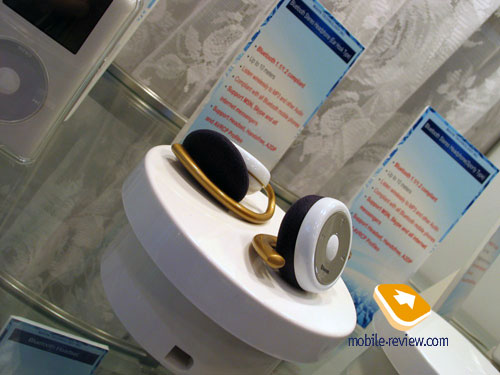
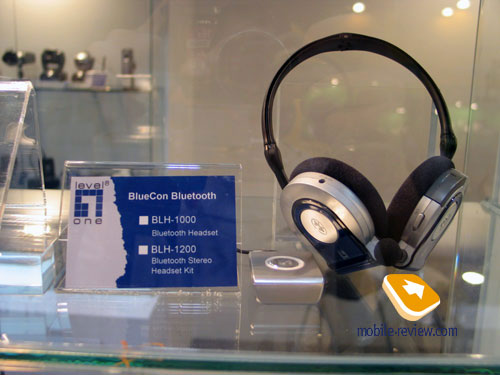

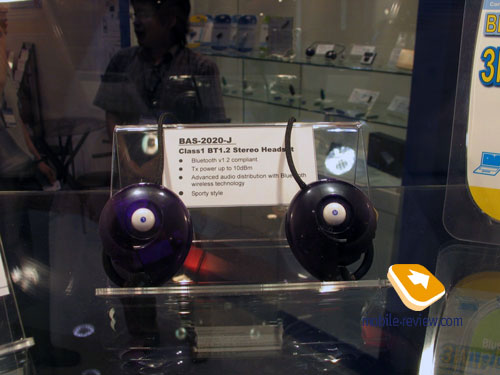
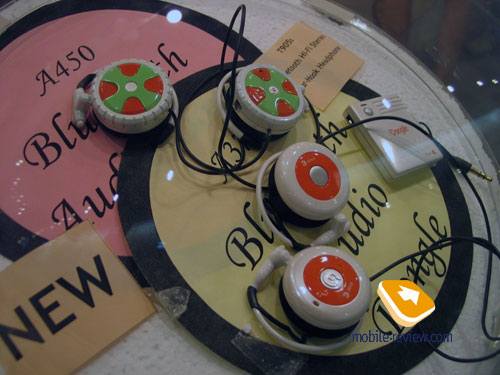

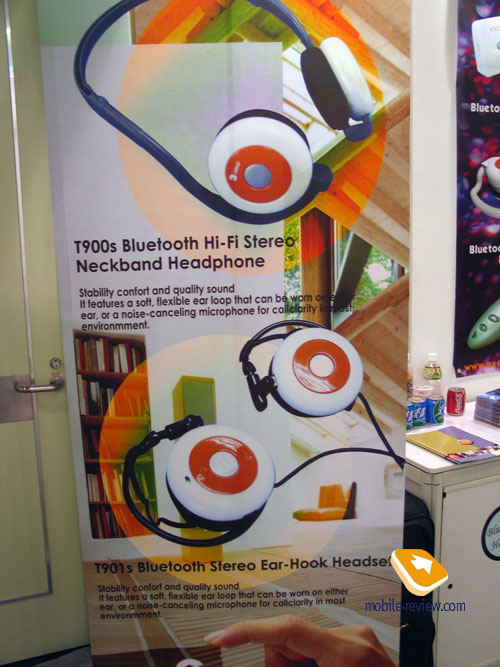
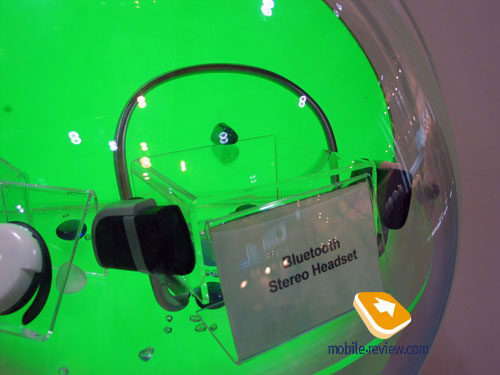
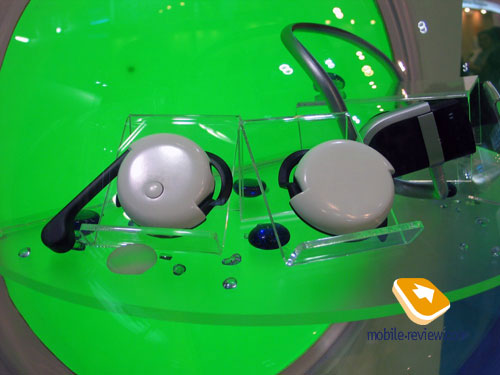
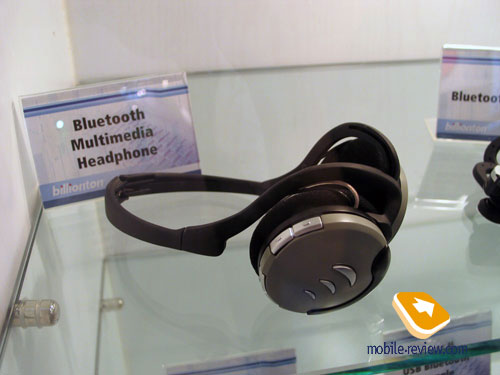
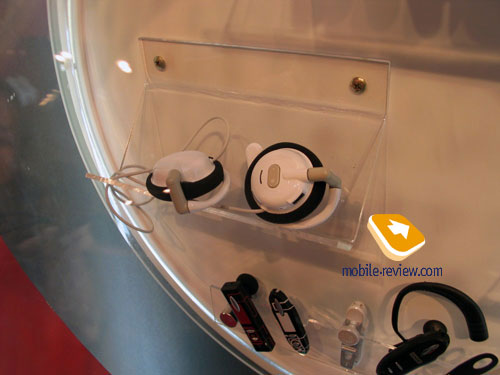
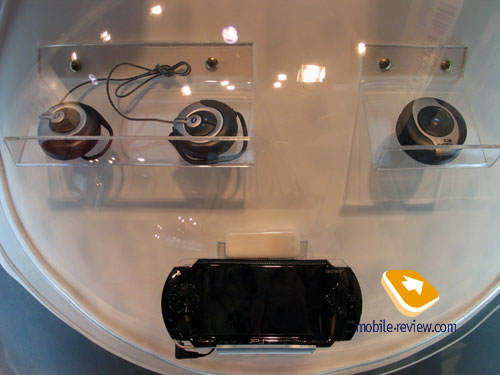
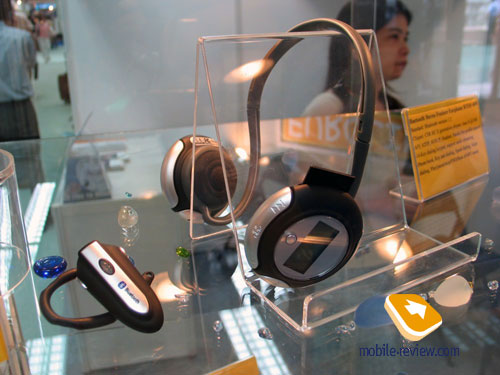
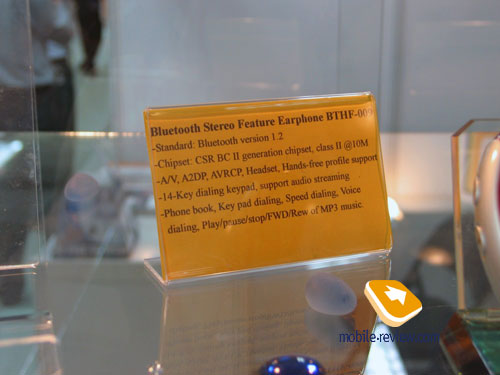
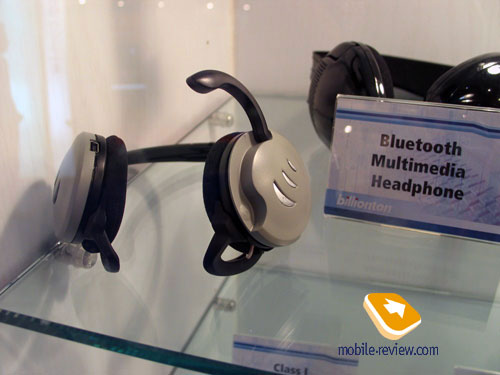
The represented Bluetooth stereoearphones will be mainly sold to famous brands via OEM/ODM contracts. We will see many of them under well known names and probably with a bit changed design shortly. They will be sold both included into packages and as accessories for phones, PDAs and mp3 players.

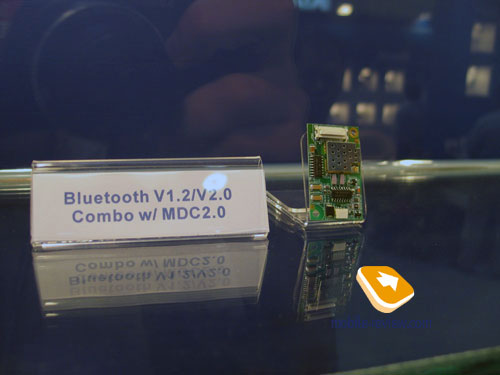
The Bluetooth 2.0 + EDR (Enhanced Data Rate) standard was officially announced in November last year. The main advantages are higher transmission speed (at least three times faster), less energy consumption, improved mechanism of connecting several devices at the same time. The certification process for chipsets and software for the Bluetooth 2.0 version took the first months of 2005. And that is the very period the companies will go on mass production of end-devices supporting Bluetooth 2.0. End-devices based on Bluetooth version 2.0 wee represented at Computex 2005: we'd like to stress USB adapters, stereoearphones and notebooks.
J-3, one of the main manufacturers of Bluetooth devices, represented Bluetooth 2.0 adapters for USB:
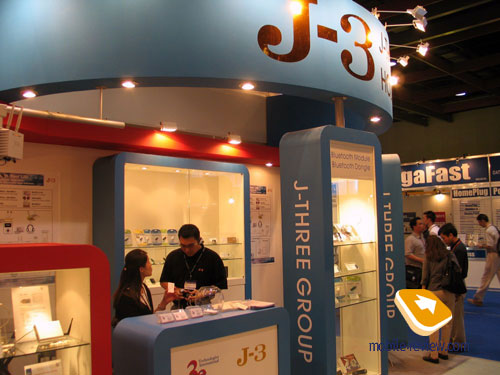
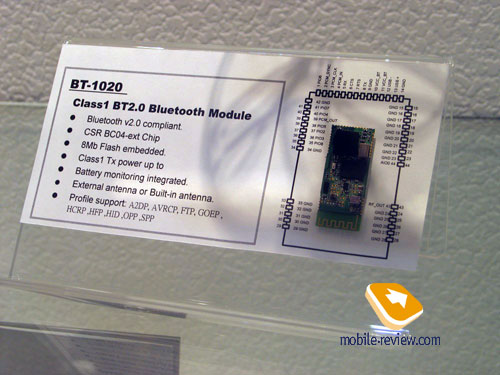

And here is a solution available in retail for about 30 USD:


One more end solution, this is Bluetake:
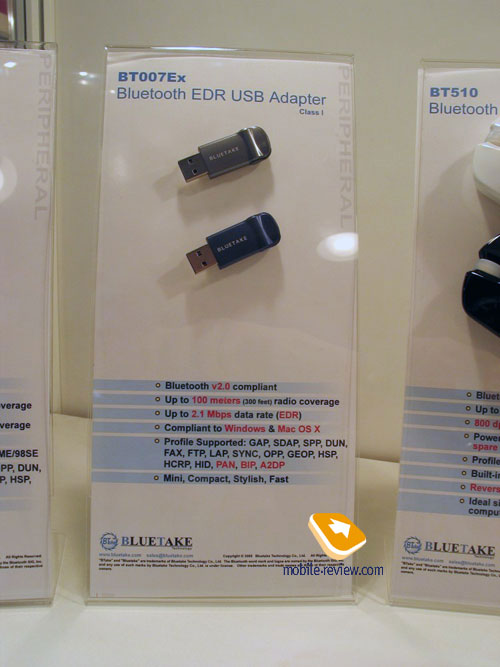
So, the main tendencies concerning Bluetooth are mass production of stereoearphones and smooth transfer to Bluetooth 2.0 + EDR.
Wi-Fi is mainly predicted for wireless connection to the Internet. One of the main applications for Wi-Fi besides access to the Internet is VoIP or IP telephony. The perspectives of VoIP via Wi-Fi have been discussed for several years and many people use it everyday. And that is why devices and applications in this field represented at the exhibition didn't surprise us.
The thing that was absolutely new was Skype. The name of this free program for VoIP (available for PC, PDAs and smartphones), that got so widespread for the last time (about 3 million users online for the moment for writing this report), was on everybody's lips. The line "Skype me" with the Skype name could have been seen on visit card. And, to tell the truth, we also tried to use Skype for negotiations in Taipei. Not only to avoid paying for roaming but to communicate being in the neighboring rooms in the hotel.
Almost all the manufacturers try to include Skype client into the preset software kit. They either have already signed a contract or negotiate.
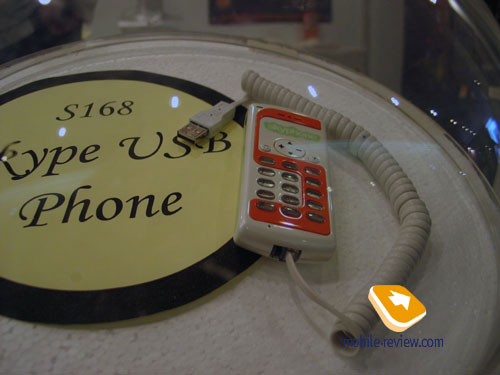
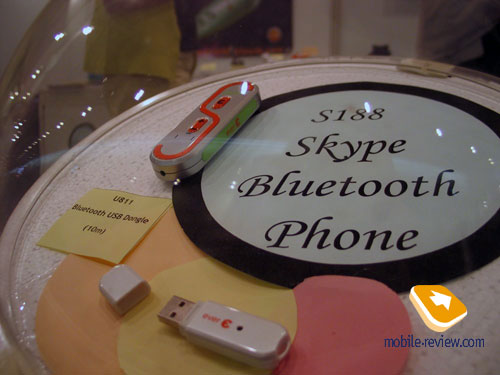
Concerning the manufacturers, many of them showed Skype devices, headsets and USB-phones. If that is not a special device, then a line "Skype compatible" with a corresponding logo are written in the description.

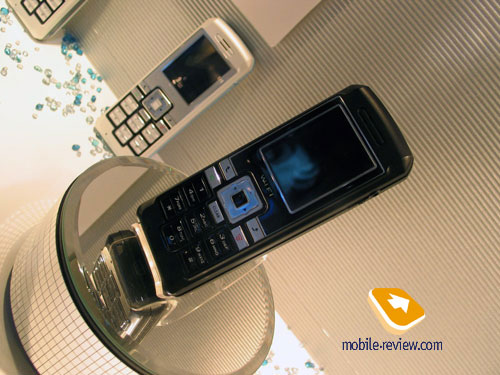
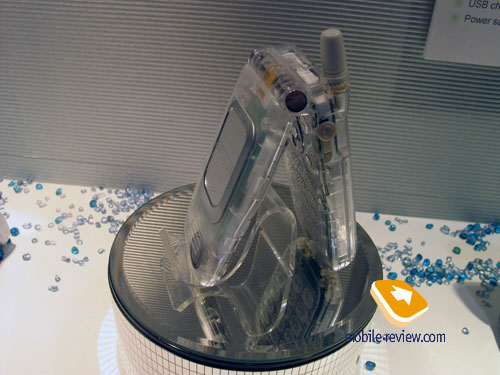
The company of Wistron NeWeb Corp. showed two VoIP phones (not smartphones) at the exhibition. That is only an ODM/OEM manufacturer developing and manufacturing devices, they do not sell them. The development haven't been bought by any famous brand and that is why it is displayed (though, a model with a transparent body was taken from the stand in the end, they probably considered it bad when a plate and microschemes are seen).

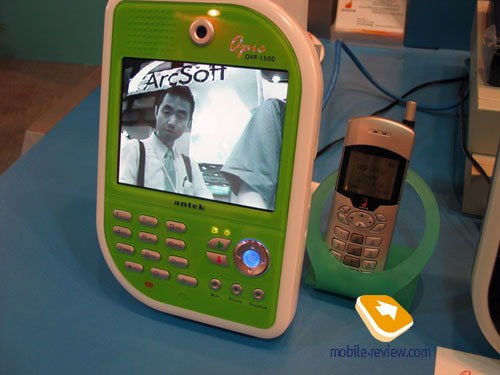

Several videophones were shown. We really liked the design of the DVP-1500 with a large QVGA-screen by Antek.
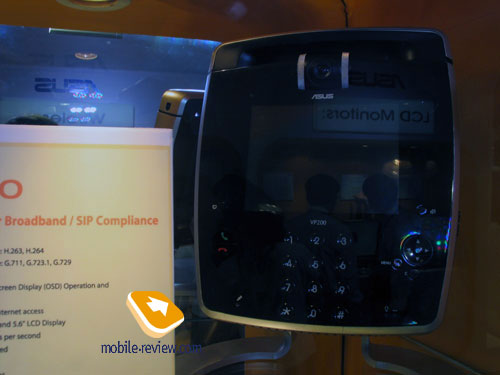
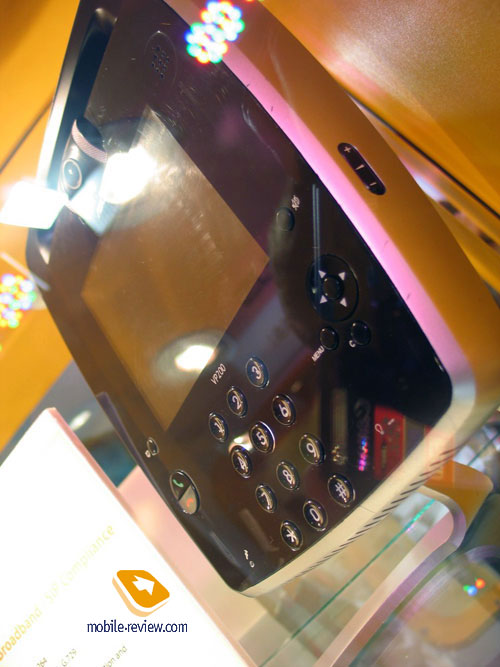
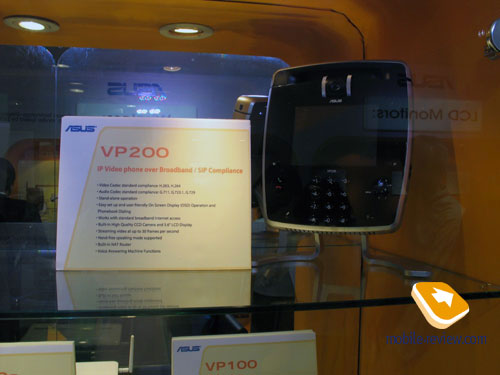
A similar device was represented by Asus under the name of Asus VP200. Videophones are not a piece of news in the computer world. The success of this branch is hard to believe in, since we see no niche for such kind devices. You can use a Web-camera for videocalls or use mobile phone as a Web-camera, and later we are to face videocalls in 3G networks. Then why to buy one more expensive device?
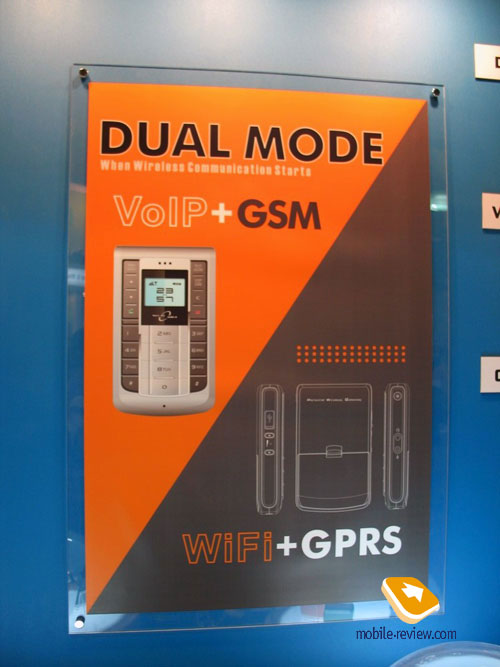

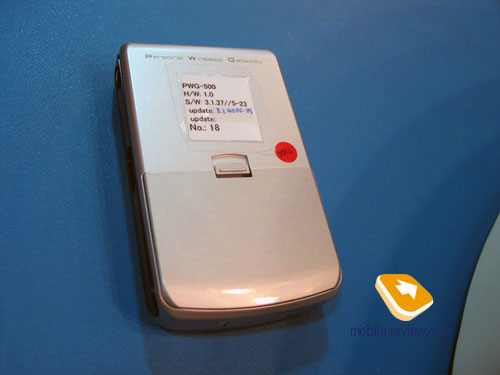
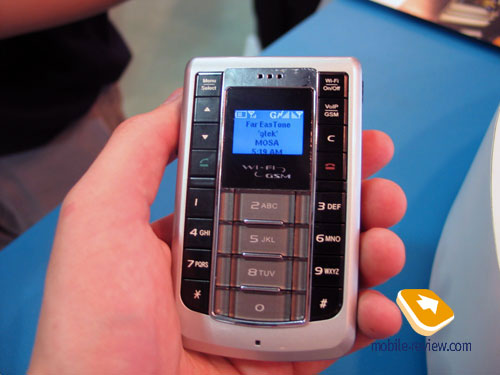
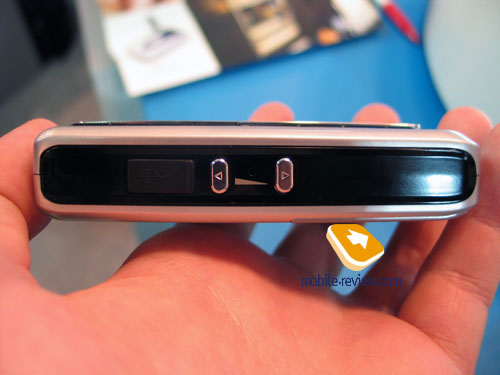
The company of G-Tek represented a new model of wireless gateway the PWG-500. The feature is the device supports Wi-Fi and Bluetooth besides a quadruple GSM band and GPRS. Its unique feature is two SIM-card slots. And unlike the previous model this one has a display. The screen is not the best, though it's not important in such kind of a device. It is mainly predicted for using as a modem for PC or PDA. Though available to use for both GSM and VoIP calls. The dimensions of the gateway are 100x60x22 mm, the weight forms 128 grams.
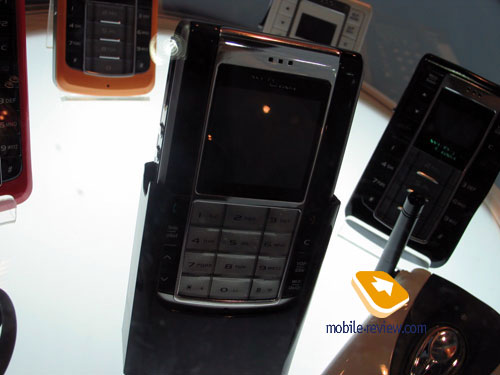
The model following the PWG-500 was represented behind the glass; its main difference is a large screen.
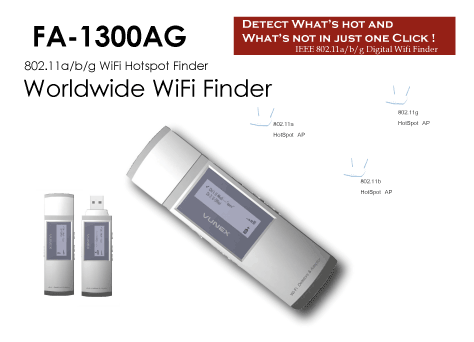
We'd also like to mention USB adapters combined with Bluetooth and flash memory among other Wi-Fi devices for the end-user. We'd stress the FA-1300AG by Vunex. That is a Wi-Fi access point detector (Wi-Fi Finder) combined with Wi-Fi USB adapter.
The main tendencies of wireless technologies for the end-user shown at the Computex 2005 are to sum up in the end.
- Mass appearance of Bluetooth stereoearphones and Bluetooth MP3 players
- Switching to Bluetooth 2.0
- The Skype VoIP-client growing popularity, device adoption for it
- The convergence of various wireless standards in one device
If we try to have a look at the future and suppose what to expect from the Computex 2006 concerning wireless technologies, then we can name Wireless USB and WiMAX. By that time these technologies will have come up to mass production. But that is the future and new reports from Computex 2005 are for you to read.
Anton Kotov (anton.kotov@mobile-review.com)
Translated by Maria Mitina (maria.mitina@mobile-review.com)
Published — 10 June 2005
Have something to add?! Write us... eldar@mobile-review.com
|









































